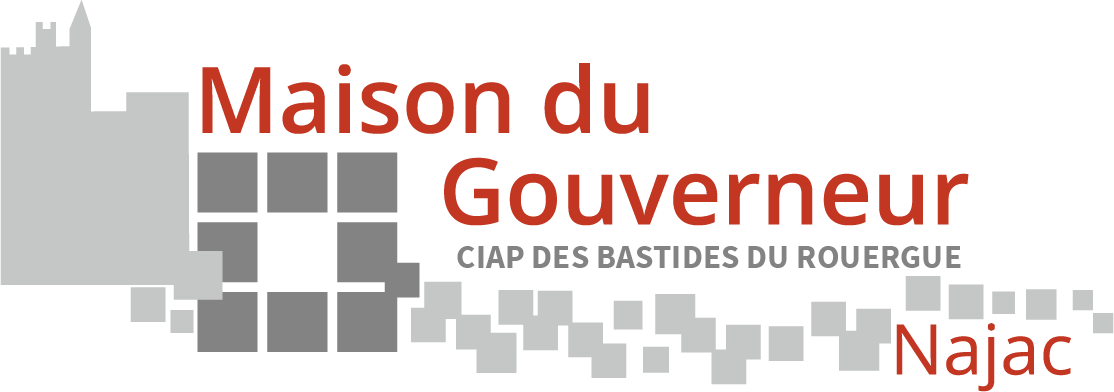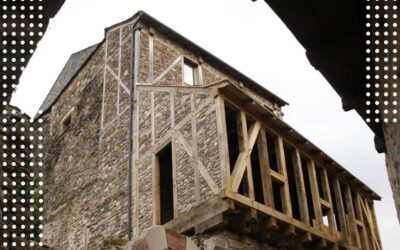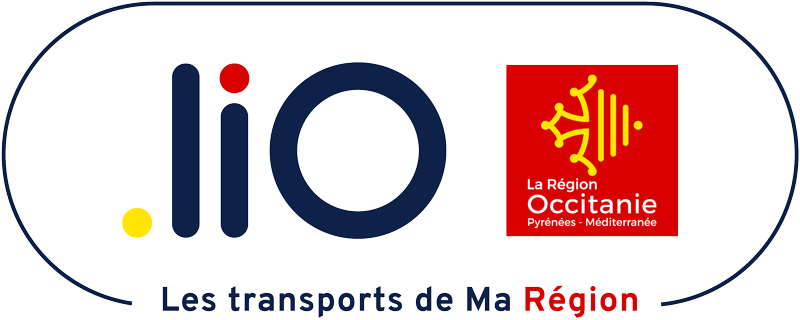THE GOVERNOR’S HOUSE, NAJAC
Centre of Interpretation of Architecture and Heritage of the Bastide Towns of Rouergue
A la une
EXPOSITION TEMPORAIRE LA MDG EN CHANTIER
La Maison du Gouverneur en chantier
Du 20 avril – 04 mai 2024
Bibliothèque de Najac
Demeure des 13e et 15e siècles, la Maison du Gouverneur a fait l’objet d’un important chantier de restauration, qui débuta en 1996 pour se terminer en 2019 par sa réhabilitation en Centre d’Interprétation. Pour fêter les 5 ans du CIAP, l’exposition revient sur ce projet ambitieux et retrace l’histoire de ce chantier en s’appuyant sur des photos avant travaux et les démarches effectuées par les différents corps de métier.
mercredi et samedi 9h30-12h30 et 14h-17h
Entrée libre
renseignements : 06 52 81 39 87
RDV- les 5 ANS
5 ans plus tard… qu’est-elle devenue ?
Evénement / anniversaire de la Maison du Gouverneur
Centre d’Interprétation de l’Architecture et du Patrimoine du Pays d’art et d’histoire
des Bastides du Rouergue, Maison du Gouverneur, Najac
vendredi 26 avril à 18h30
entrée libre
renseignements et réservations : 05 65 81 94 47
EXPOSITION TEMPORAIRE 2024-2025
La ville médiévale, un jeu d’enfant.
Du 05 avril 2024 au 02 novembre 2025.
Maison du Gouverneur, Centre d’Interprétation de l’Architecture et du Patrimoine, Najac
Parcourez la nouvelle exposition temporaire du Pays d’art et d’histoire à la découverte des trois formes urbaines du Moyen Âge : la sauveté, le bourg castral et la bastide. Cette exposition ludique et immersive, adaptée à tous les âges, vous fera remonter le temps en vous glissant dans la peau d’un moine, d’un chevalier ou d’un marchand. À vous de jouer !
Historique
The Governor’s house
Located in the heart of the castral village of Najac, this medieval residence of wealthy merchants of the 13th and 15th centuries, completely renovated between 2017 and 2019, now houses the Centre of Interpretation of Architecture and Heritage (CIAP) of the Pays d’art et d’histoire des Bastides du Rouergue and offers breathtaking views of the royal fortress and the landscapes of Najac.
The permanent exhibition developing in this exceptional house aims to explain and highlight the rich heritage of the territory.
The CIAP also offers temporary exhibitions, conferences and events outside the walls in all the municipalities of le Pays d’art et d’histoire des Bastides du Rouergue (exploratory visits, meetings, site or workshop visits, etc.). It also welcomes schools throughout the year during visits or heritage workshops.


What is a ciap ?
A Centre d’Interprétation de l’Architecture et du Patrimoine (CIAP) is a local cultural establishment with the aim of making all audiences (young people, inhabitants and visitors) aware of the architecture and heritage of a country of art and history.
The visit of the Governor’s House – CIAP will allow you to discover the richness and diversity of the heritage of the Pays d’art et d’histoire and will give you the keys to understanding the history and evolution of this territory.
The scenographic itinerary combines films, sound documents evoking the history of the Governor’s House (Murmures de murs…) , tales, an interactive station, a game of giant goose, models of ancient objects.
architectural History
The architectural history of the Governor’s House begins in the 13th century, and incorporates the various additions from the 15th to the 18th centuries. Thus, upon arriving in the Governor’s House from the castle street, the visitor goes back in time from the 21st to the 13th century.
For its rehabilitation project, the simple and bare architecture of the Governor’s House, which has survived time and continues to impose itself by its volumes, has been respected, keeping the building untouched by any heavy and irredeemable intervention that would obscure its history.
The architectural construction leaves the walls «bare», devoid of modern elements (insulation, etc.), which allows us to keep a reading of the built heritage and to understand its constructive system.
The scenographic discourse, meanwhile, is twofold: it tells the story of the Bastides in their context, as well as that of the building.
The scenographic furniture is «mobile» as was the furniture of the Middle Ages, a period during which the lords travelled with their furniture.
Modern visual and sound scenographic tools, allow the walls of this building to tell you the stories of the past, the present, and an immersion in the history of the Rouergue.
THE bastides OF THE rouergue
Najac
Defended by a powerful fortress controlling the Aveyron valley, the village of Najac was one of the main towns of Rouergue during the medieval period.
Villefranche de Rouergue
Founded in 1252, the bastide was a city of power whose economy was flourishing, as evidenced by its urban scale and the quality of its architecture.
La Bastide-l'Evêque
Overlooking the gorges of Aveyron and Lézert, along which were placed tilt hammers, intended to beat copper, is La Bastide-l’Évêque. This bastide was founded in 1280 by the bishop of Rodez in order to compete with Villefranche-de-Rouergue.
On the neighbouring plateaux, remains the sanctuary town (which is a town that built around a church) of Saint-Salvadou, which is a dependency of the Benedictine abbey of La Chaise-Dieu in the 11th century, as well as the former seigneurial fief of Vabre, which served as a refuge during the Hundred Years War.
Sauveterre-de-Rouergue
Founded on a plateau of Ségala in the 13th century by the royal administration, the bastide is distinguished by a regular plan organized around a vast square lined with cutlery.
Rieupeyroux
Founded shortly after the Year Mil by the Benedictine Abbey of Saint-Martial de Limoges, a sanctuary town of Rieupeyroux guaranteed its inhabitants an indispensable spiritual security in order to develop agricultural activities and economic exchanges.
Villeneuve-d'Aveyron
As the gateway to the Causse, the small medieval town that combines a Romanesque-era sanctuary town with a 13th-century bastide was an important stop for pilgrims to Santiago de Compostela.
grands sites occitanie

« Vos plus belles histoires naissent ici. »
The «Grand Site de Midi-Pyrénées» brand was launched in July 2008 by the Midi-Pyrénées Region. Following the merger of the Midi-Pyrénées region with Languedoc-Roussillon, the brand adapted to the new name of the region and became «Grand Site Occitanie».
Almost 85% of the tourists who visit the region pass through one of these Grand Sites. There are about 30 million tourists every year. The objective of the «Grand Site Occitanie » label is to promote the heritage, cultural, natural and historical sites of the region and to strengthen their tourist attractiveness. In this sense, investments are made for the enhancement of heritage, the quality of host infrastructure, and the preservation of the sites’ environment.
The appellation « Bastides et Gorges de l’Aveyron » includes the communes of Najac, Villefranche-de-Rouergue and Villeneuve. Since the beginning of 2019, Saint-Antonin-Noble-Val and Caylus have joined the scheme.
The Grands Sites Occitanie / Sud de France is a unique collection illustrating the best of our region around remarkable heritage, cultural, natural or historical riches.
From the Pyrenees to the Mediterranean, Occitanie reveals itself through the detour of 40 unmissable places, majestic, authentic, wild or legendary.
our partners


contactez-nous



















